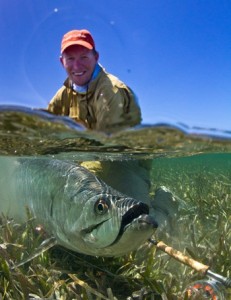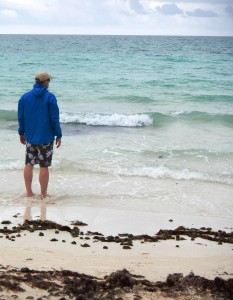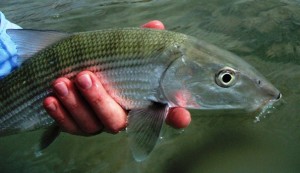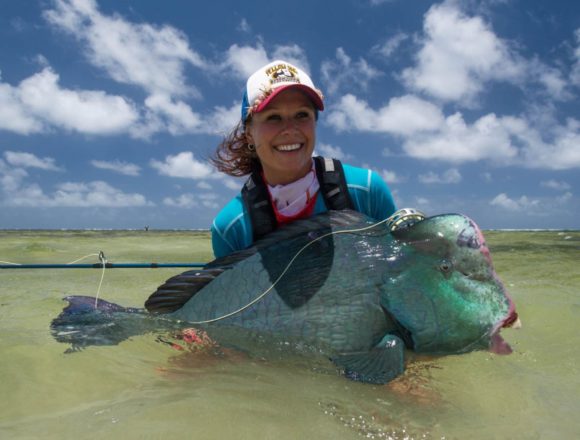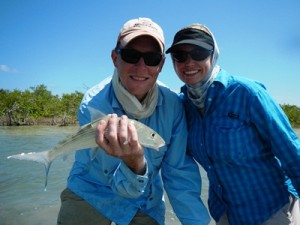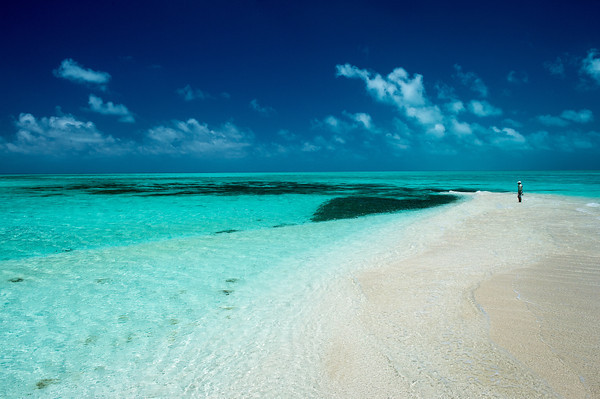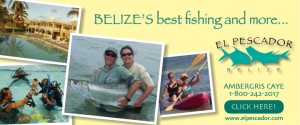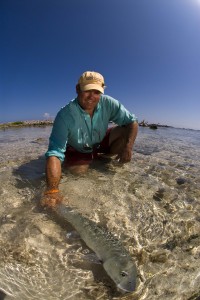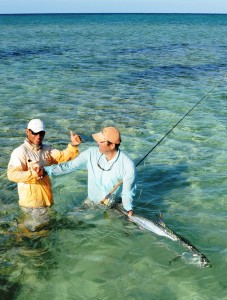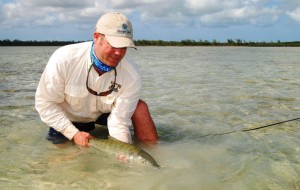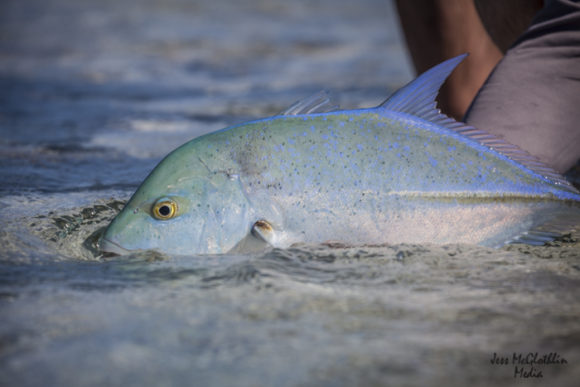
If you have picked up a fly fishing anything lately, you probably have seen photos taken through the lens of Jess McGlothlin or you’ve read an article written by her hand. She’s got a keen eye for composition and seems to be just about anywhere where things are happening in the fly fishing world. She has Jess McGlothlin Media and is also part of the Yellow Dog Flyfishing team. I did an interview with Jess to hear about what she did down in the South Pacific. It isn’t a place you think of when it comes to fly fishing, at least not now, but maybe you will.
Jess, I’ve seen some photos you took from a fishing expedition to a location in the South Pacific. Where was it, exactly, that you went and, most importantly, how was the fishing?
I’ve been lucky enough to be on a few South Pacific trips in the past couple years. I did an expeditionary trip to Samoa for YETI and Outside Magazine this spring, but the trip that, to me, epitomizes the South Pacific was exploring Anaa Atoll in French Polynesia with a team from Costa del Mar and the IndiFly Foundation. Anaa is a small atoll in the Tuamotu Archipelago, about one-and-a-half hours’ flight northeast from Tahiti.
In a word, the fishing was good. Really good. Kind of great, really. Healthy and happy bonefish (some big boys), bluefin trevally, bohar and all manner of reef fish, napoleon wrasse, and other species. I talked recently to a friend who returned to Anaa and he reported some strong GT fishing.

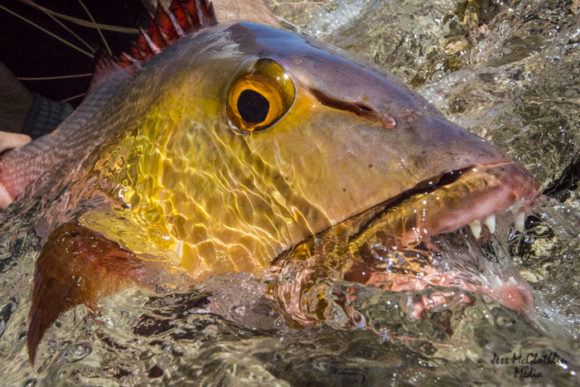
The South Pacific is just not on the radar screen of most saltwater anglers outside of a few, well known places, like Christmas Island. What do you think the potential is for that region based on your experience?
I think the potential is huge. I’d love to get back in the area and spend an extended amount of time exploring — there are fisheries that are not quite on most people’s maps yet. In the States we hear more about Christmas, Rangiroa or Tetiaroa, but after the traveling I’ve done in the past several years, Anaa is the place I’m trying hard to get back to. A variety of species, friendly locals, and a strong “adventure” element… the South Pacific ticks all those boxes. And give me undeveloped locales over tourist zones any day.
From the trip to Anaa Atoll, what was the highlight?
The final day of the Anaa trip, my photo clients looked at me and said, “You’ve shot all week, now it’s your turn to fish,” and handed me a rod. I couldn’t argue with that. I caught a bonefish and a bluefin trevally and then happy went back to the camera, more than content.
It’s rare to go to a place where there is so much photo fodder. Not so much a plethora of subjects in the traditional sense — you’re on a small island with limited inhabitants — but in terms of the sheer beauty of the place and its people. One day we took a break from fishing to spend some time getting to know the village, and ended up participating in patia fa, the highly competitive local sport of throwing homemade spears at a coconut suspended high on a pole. We just hung out and threw spears and stuff for an afternoon— how awesome is that?
And, yeah, I could have stayed another month just to shoot photos of the fish.
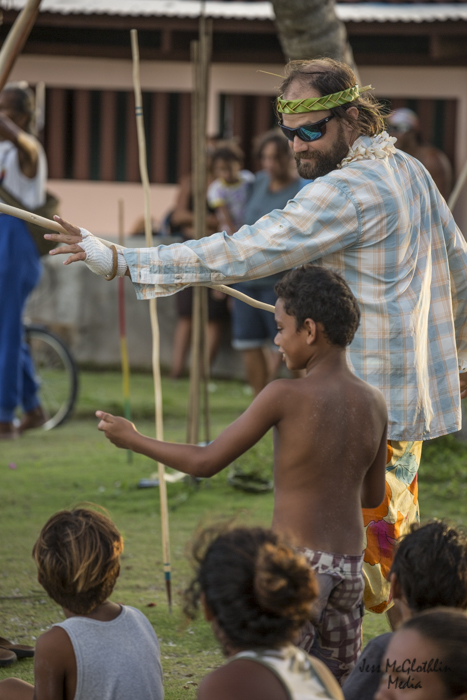
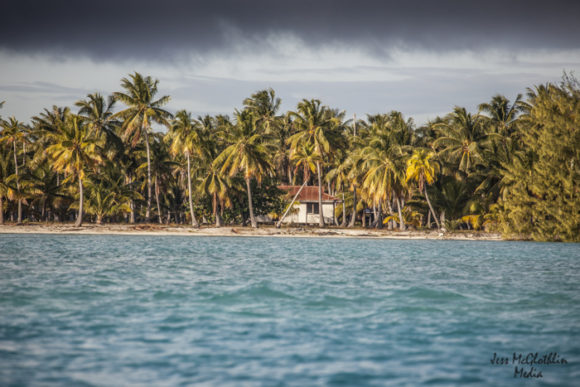
You shoot some mean photos. I’m wondering what sort of considerations you take when you head somewhere so remote in order to not have the whole trip go sideways on you.
Something always goes sideways; that’s a given. On this trip, I ended up in the little atoll clinic (luckily the rotating, listing French nurse was there at the time) with toe and foot infections from coral cuts. I ended up losing both toenails and by the end of the trip I could barely fit my feet into my flip-flops for the flight home. Part of the game, and there’s no question in my mind the images were worth it.
In planning any shoot, I sit down with the client beforehand and develop a shot list so I know what their “must have” shots are. This list can be as short as a half a page and as long as ten. If logistics allow, I sit down every evening with clients while on location to review shots and ensure they like what they are seeing. Typically we do it the first day or two, then they know they’re comfortable with what we’re shooting and it’s less of a worry. It’s always a good sign when the client starts to bring beer to the photo review.
I’m lucky to travel frequently enough to have developed a “gear list” with items I know I’ll need. It varies location by location and job by job, of course, but the basics stay the same. I take meticulous care of cameras on location — in saltwater locations they get swiped down with a damp cloth then dried each night, lenses and filters carefully cleaned, batteries charged, and memory cards backed up three times then cleared. If I don’t have time to do all that and sleep, then I don’t get sleep. It’s pretty simple.
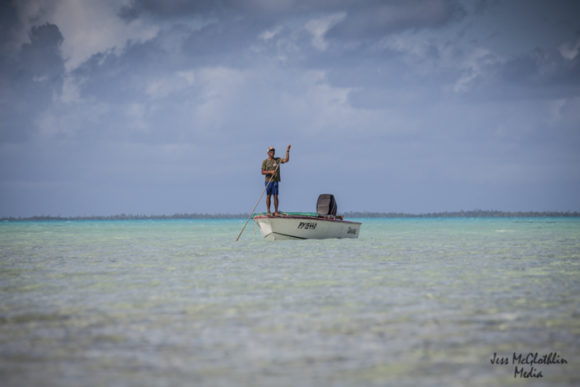
The trip you took was associated with IndiFly. What is that program and where are they working?
IndiFly is one of the better ideas I’ve seen come into the fly-fishing community. As a photographer and writer, to me it’s the ideal combination of what really got me into photography — humanitarian work — and fly-fishing. The organization’s website perhaps sums it up best:
“Indifly is a 501(c)(3) organization protecting the world’s greatest fisheries while providing sustainable livelihoods for indigenous peoples. Indifly’s mission is focused on the conservation of natural resources, food security, poverty alleviation, and sustainable livelihoods in these communities.
We accomplish our mission by assisting indigenous communities around the world transition from non-sustainable practices. Most often, through the development of sustainable* community owned fly fishing ecotourism operations. *economically/environmentally/culturally.”
Add in an accomplished, intelligent group of leaders and it becomes something special.
American anglers seem to want a good adventure that ends with a great meal and a comfortable, bug-free bed. How do you think the South Pacific meets, exceeded or falls short of that?
It depends where you are going. Where we were on Anaa, the lodging and food were excellent. We slept in well-furnished huts with real beds, hot water, electricity and all the comforts of home — really, I was quite impressed. There was even a small TV in one corner (I never turned it on to see if it actually worked). The food was very local (raw fish in coconut milk, various stir-fries, all manner of seafood, etc.) and extremely good. We even had French vanillas creamer for our coffee, and fresh eggs and homemade chocolate croissants every morning. So Anaa “exceeded,” big time. I lived nicer there than I do when I’m back in Montana.
Other places, it depends on how you set yourself up. I’ve slept on the beach and been chewed up by bugs, stung in the neck by a scorpion in my sleep, and returned from trips with my fair share of various tropical fevers. It depends of what kind of care you take of yourself, and if staying in fancy resorts is your thing, typically the lodging and food meets most American standards. Personally, I prefer to stay, eat, and work with locals as much as possible — I think it’s the only real way to get the true feel of a place and you meet some of the best people.
It feels like everything that can be discovered, every fishery that can be know, is known already. Do you think there are places still left to be explored?
I like to think so. Maybe it’s romantic or naive or silly, but I like to think there are still some kick-ass fisheries out there waiting to be explored. I can only hope I’m lucky enough to be on the teams that pioneer them.
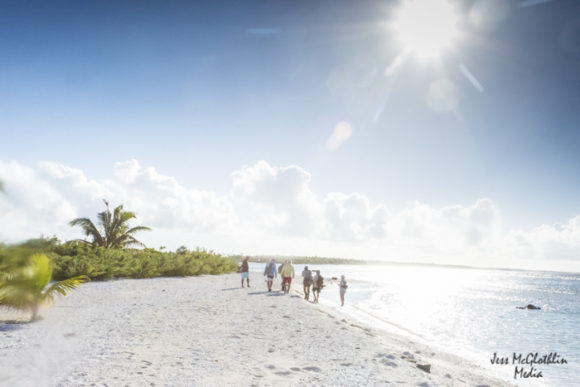
Do you find it hard to be behind the camera when the fishing is good? How do you deal?
“How do you deal?” — I love that. I’m getting better at it. If I’m on a big commercial shoot, I may not ever pick up a rod. The job has to come first. But it’s hard sometimes. Being out on a flats boat all day can be nice, because when the light is really awful on a bright, hot day, I can usually use that time to shoot underwater work and maybe pick up a rod.
Several weeks ago I was an instructor at a Belize On-the-Water Fly-Fishing Photography Workshop for Yellow Dog Flyfishing Adventures. On the first day, I was in the boat with a student and he wanted to shoot, so I fished. It was a treat! One permit to hand and I was a happy camper for the rest of the week… it’s amazing what just a short stint on the rod can do to improve morale. It’s hard to be in these places and not fish, but part of the gig. And it makes those times when I can all the better.
And when the fishing is good, it means I have a lot to shoot, usually in a short space of time! My brain gets clicking and busy… and there’s something just as satisfying sharing the moment with the camera in hand. I know those moments will be documented for some time to come — and that’s what makes it all work.
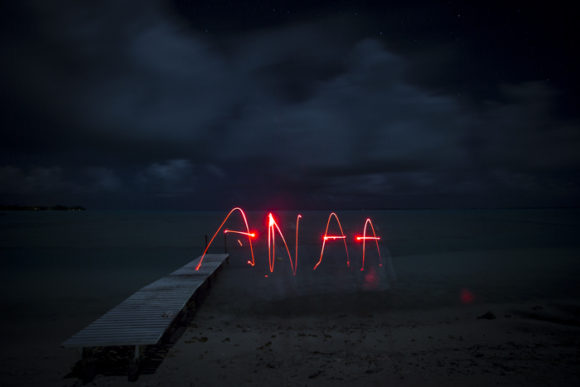
Awesome Jess. Thanks for sharing your experiences with us. Hope to share the water with you in the future (always good to share a boat with a photographer… way more bow time!).
